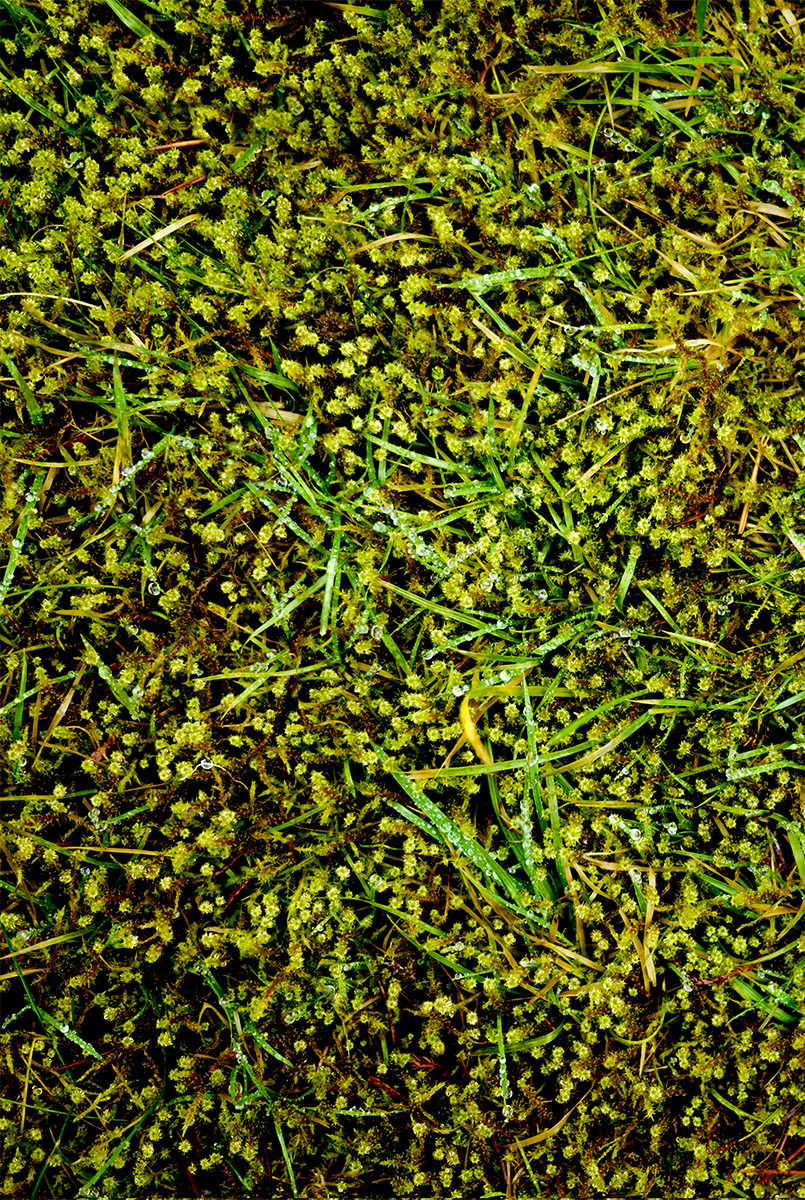
Taking Root
Elizabeth Keller
No part of me is a fungus and therefore I cannot talk to trees. I cannot warn them of danger or share nutrients—short of laying down and decomposing right there—but sometimes when walking in the woods I do the next best thing, which is to put my palm on the trunk of a Douglas fir and feel the scaliness of the bark, the way the grooves form shapes that seem to reach and shift like the ghost of something warm, a forest fire, a hug.
On a nature walk in elementary school, a teacher told me a kind of just-so story about Douglas firs. There once was a huge forest fire, and the mice, fleeing the flames, turned to the trees for help. The maples and cedars were too busy trying not to burn, but the Douglas fir’s fire-resistant bark offered protection, and the mice leapt inside the cones to safety. This explains the papery projections that stick out of the scales of Douglas fir cones. They have three points—the middle one longer than the other two—like the back legs and tail of an escaping mouse.
Maybe my fascination with Douglas firs started as one of convenience: you don’t even need to look at the needles or bark to identify the trees; you need only glance at the cones scattered around the trunk. There’s something comforting about a tree whose identifying feature is a long-ago act of kindness.
When I was younger, though maybe still older than I care to admit, I thought I could talk to the apple trees in my yard. I’d gently hold an outer branch, asking for permission to step into the canopy of leaves, and once I decided enough time had passed for the tree to make up its mind, I’d enter and press my forehead to the bark. We communicated telepathically, about how I did on a test or how the apple trees were finding the strangely dry weather in this Washington June. I never imagined telepathy would be enough for Douglas firs. They’re far too stately. There’s a gap there that my tentative ramblings about my life can’t quite bridge. In old growth forests, Douglas firs can grow to six feet in diameter and two hundred fifty feet tall. It would take nearly fifty of me, balanced precariously one atop the next, to reach the fine sprinkling of needles at the top. Their needles are a deep green that perfectly complements the warm gray of the trunk and the clear river blue of the sky as the trees stretch upwards to meet the clouds.
Perhaps the organisms that offer us the best chance at communication with Douglas firs are lichen. Lichen are clumps of symbiotic vampires: they prefer to grow on the dark sides of Douglas firs, away from the sun, toward the pooling of rain. The growth of lichen is also linked to decomposition—the Douglas firs at their oldest and most heavily-lichened are those that are the softest, the closest to death. I’ve never been lost alone in the woods before, but if I were, I could count on their lichen-coated trunks to point me North. And if, while lost in the woods, I begin to grapple with my own mortality, I can look to the most heavily lichened Douglas firs and know that they, too, will soon die. We can stand side by side, look over a small hill in the distance, and take a guess at what our deaths might be like. Mine, maybe, of heatstroke, or in a tsunami, or of a new unforeseen virus that develops as disease vectors change and spread. Theirs of old age, or in a fire of a magni-tude they are not yet prepared to face. Even without being lost, I think there’s some comfort in being able to map the evolution of a forest from the lichen patterns of the Douglas fir trunks: which trees will fall down soon and die, which young saplings will sprout up from the underbrush.
I wonder sometimes what it would be like to have direct relationships with trees, to place our palms on the trunks of Douglas firs and exchange nutrients, let the trees know we are here.
Douglas firs don’t have to look at patterns of lichen growth to send messages. Instead, their roots form part of a network of mycelium that acts as a giant forest brain. This network was first discovered and studied in Douglas fir seedlings, making them pioneers of human-tree relations.
The Douglas firs also helped us to realize that trees protect each other. If an older, stronger mother tree has nutrients to spare, she sends them through the fungal networks to her younger, frailer children. If a Douglas fir is covered in its lichen cloak of death, it shares its carbon stores with neighboring, healthy trees. If one tree detects swarms of insects nearby, it produces alarm chemicals to alert its friends.
I’ve been researching all of this because I find myself wondering how much trees notice me. If they respond to the buzzing of insects or the heat of approaching forest fires, are they aware of me walking through the Columbia River Gorge? Do they consider the thumps of my slightly-too-big hiking boots a threat, or something barely noticeable, as insignificant as slight breezes nudging the little purple flowers of miner’s lettuce that grow along the trail?
I live in the Midwest for nine months out of the year now, leaving behind the Pacific Northwest evergreen forests and never-ending rain for Northern White Cedar and five feet of snow from November to April. There are no mice in the cones and when the air smells like pine, it’s missing that distinctive note of Douglas fir, something vaguely citrusy and sweet, like boiled Oregon Grape.
I guess what I’m asking is: what would it take for Douglas firs to miss me? For me to be part of their mycelial network, to send them warnings, for them to feel the sound of my breathing and the way the blood rushes through my skin like water pumped through the phloem.
And really, what’s the difference between Douglas firs and humans, besides the obvious things like thumbs, warm blood, and office chairs? It’s not care or ability to communicate. It might not even be awareness of death. I want to be a peaceful part of the ecosystem, maybe mess around and take root. I want to choose a tree, maybe name it something like Constance or Agatha, send it water and receive its existential fear. My point is we’re not so different. My point is that I care about Douglas firs, and maybe I want them to care about me. Maybe that’s a little bit selfish.
Who knows the unintentional yet immeasurable ecological harm I’ve caused just by existing. Dairy pushes deforestation, Douglas fir wood sourced from the US is rarely sustainably harvested. This summer I loaded charcoal into a barbecue grill and now I want a tree to hold me. The thing is, I’d hold it, too, and we’d stand there, roots wrapped around each other, photosynthesizing until the sun shuffles its way down behind the horizon and into the cold, dark abyss of space.
Elizabeth Keller
is a writer from Vancouver, Washington who now lives in New York City. Her writing and graphic lit have been published in Solstice, Movable Type, Crashtest, and The Interlochen Review.
Originally published in Moss: Volume Eight.
‹ |
Previous Flight, Gerri Brightwell |
Next Crown Shyness, Val Dering Rojas |
› |


